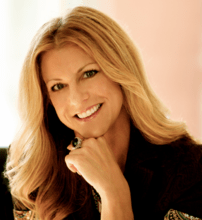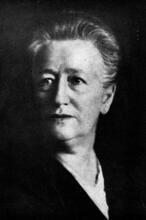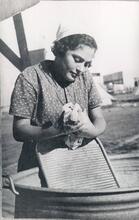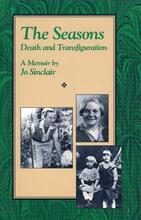Portrayals of Women in Israeli Media
Representations of women in a variety of media, including advertising, news, and entertainment, reflect and perpetuate the marginality of women in Israeli society. This review of portrayals of women in the Israeli media from the early 1980s to the 2020s suggests that gender continues to matter. Israeli media clearly treat feminine and masculine unevenly, constructing women around narrow conceptions of beauty and hyper-sexualization as powerless victims of violence, dominated by men. Nevertheless, these representations are not static. Over the years they have diversified, showing Israeli women in more varied professional roles, empowered, and enjoying sexual freedom and independence. Overall, however, gender inequity remains in place and women are still marginalized in Israeli media.
Introduction
Media texts are a prime site through which to study the position of women in Israeli society. They constitute an arena that presents society to itself, serves as a key agent of socialization that defines identity, establishes the parameters of consensus, and relegates what is perceived as unconventional to the margins.
Israeli media across genres and themes—including advertising, newspapers, television programs, and to online news sites—have often portrayed women as marginalized in Israeli society and thus contributed to the perpetuation of the existing gender inequality. Very often women and men have been represented in dichotomy. Men have been presented as “normal,” while women have been presented as the minority “other“: that is, as the exception, the incomplete, the impaired, the marginal. The media generally relegate the feminine to traditional roles in the private sphere or to traditional caring roles in the public sphere; restrict the female presentation to the physical functions of sex and reproduction; and place women within the world of emotions, where rational thought is lacking and behavior uncultivated. Men are seen as logical, ambitious, active, independent, heroic, and dominating; by contrast, women are portrayed as more romantic, sensitive, dependent, and vulnerable.
In this entry, we focus on research relating specifically to original Hebrew production content. Most of this research focuses specifically on news, current events, and politics, as well as advertisements. Our reference to online content remains restricted to online news, as research is yet to overcome the many methodological challenges presented by the internet’s boundless arena.
Representations of Women in Advertising
2011 Israeli commercial for Tapuzina, referring to a previous famous commercial from the 1990s.
Advertisements attract special interest from feminist activists and scholars, who see them as agents of Western capitalist and patriarchal ideology. The main criticisms of advertising in Israel—made by scholars such as Sigal Barak-Brandes, Anat First, Dafna Lemish, and Gabriel Weimann—are that it frequently depicts women as sexual objects. This is done through exposing parts of the female body, or through a focus on provocative body and finger movements (including self-caressing) and enticing facial expressions (for example, tantalizing glances and emphasis on the lips).
2008 Israeli commercial for mineral water, with model Bar Rafaeli.
Female sexuality is also often woven into advertising through devices that hint at violence. Dafna Lemish has uncovered motifs resonant with pornography in Israeli advertising: fragmentation of the female body, bondage, forced physical contact, symbolic violence, and potential violence. In most of these advertisements, the women ignore or are indifferent to the violence, or even appear to enjoy it. Some are depicted as encouraging sexual violence: they dress and pose provocatively, or expose parts of their bodies in ways intended to arouse the viewer. They exude a willingness to initiate sexual relations under any circumstance and at any price. Women in advertisements are presented as objects rather than subjects: as fruits (colorful, juicy, and tempting to eat); as packages (perfume bottles); or as animals (identified with the untamed, the natural, the impulsive, the uncivilized).
In addition to being reduced to their sexual functions, women are identified with lower-value and lower-status consumer products, particularly those associated with housekeeping or self-grooming. Such commercials project a differentiated status of men and women. Men in commercials are more often depicted in the working world and women in the domestic domain (Weimann, 2000). The rewards promised by advertisements center on external appearance for women but practical benefits for men. Commercials directed at men or using men most often portray them as “professional” sources of information guided by rational thought, while those directed at or using women present them on the “personal,” emotional level. In addition, most women in commercials are significantly younger than men.
While advertising in Israel has evolved over time, many trends remain constant. Barak-Brandes found conservative depictions of motherhood and mothering practices persisted in Israeli television commercials: an aesthetically pleasing and shapely “good mother” who takes her role very seriously but pays an emotional price for these efforts. Barak-Brandes’ findings confirmed a patriarchal ideology of motherhood that denies the identity and selfhood of women beyond a maternal role. However, she also uncovered progressive images of the clever, resourceful mother alongside the pathetic and ridiculous “bad mother.” Therefore, ads have also the potential to serve as a mobilizing force for the possibility of change.
Representations of Women in News and Current Events
News is the most prominent site of public media. Even in an era of social media, news plays a critical role for Israelis in updating their information and shaping their social-political views. The Israeli findings from the Global Media Monitoring Project, a longitudinal study of representations of women in the news, show that women continue to be invisible or marginal in Israeli news coverage. They are barely represented in the faces we see, the voices we hear, and the opinions we are exposed to, and women-specific issues do not top the political-social agenda.
Findings from 2015 indicated that the only 24% of individuals mentioned in the Israeli news media (television and both printed and online newspapers) were women, up from 17% in 2010. In internet news (including online versions of printed newspapers), women’s share was even lower (15%). The coverage of women was highest in local news (75%) and much lower in the national news (26%) and international news (19%). Women as news subjects were most prominent in comparison with men in topic areas of celebrity, arts, media, and sports (47%) and crime and violence (41%), and least prominent in politics and government (6%). Women were covered as news subjects more than men in areas of occupations in the non-profit sector (80%), the arts and pop-culture (69%), children (67%), home-making and parenthood (58%), and law-related occupations (52%). Out of 136 print, radio, and television news stories on the research monitoring day (March 25, 2015) only 24 (18%) had women as a central focus.
Surveys conducted by Anat First and Havi Inbar-Lankry for the Israeli Second Authority for Television and Radio confirmed these findings. For example, only 22% of the news characters were women in 2011, and women constitute only 24% of the characters in current events programs, although 45% in current events talk shows.
Representations of women in positions of power
The news media are one of the major factors working against the entrance of women into politics by devoting less coverage to women politicians than to their male counterparts. They present women politicians in the same stereotypical manner as women in general, paying considerable to their appearance and age, referring to them by their first names, typically photographing them in private spaces rather than parliamentary settings, and asking questions about their duties as wives and mothers. Women politicians are frequently represented by different, and even contradictory, stereotypes, simultaneously reflecting the double standard and often conflicting expectations women in power are held to; expecting them to practice "professionalism" (such as assertiveness and ambitiousness) and "femininity" (such as softness and compromise) at the same time.
Hanna Herzog conducted a ground-breaking study of the Israeli political context, focusing on women office-holders in local jurisdictions from 1950 to 1989. This study was formative in framing the studies and discussion that followed. Herzog demonstrated various forms of exclusion that perpetuated the distinction between the private and public sphere and continued to relegate women to the former. These included coverage of female politicians in the women’s sections of newspapers, alongside photographs of models or recipes, or pictures of them in their kitchens or in “feminine” poses. Such images suggest either that female politicians brought their female world to politics or denied their feminine identity in order to be politicians. Herzog concluded that although these women seemed to have crossed over into the political world, in media representations they remained in their domestic/feminine world.
Dafna Lemish and Chava Tidhar’s study focused on women’s representation in paid campaign ads for the 1988 and 1996 Knesset elections. Similar to other studies from this period, they noted the low level of coverage of women candidates from across the political spectrum and how they were pigeonholed into domains perceived as feminine, such as health, education, and welfare, or excluded from issues of major concern, including security and the economy. The “motherhood” strategy, in particular, was evident in the 1996 campaign, where even the senior politician Limor Livnat was “legitimized” through depictions of her role as a mother.
Studies over the last decade have turned their attention to images of high-profile women politicians. Research has focused on women leaders such as established politician Tzipi Livni (by Halevi) and young activist Daphne Leef (by Liran-Alper and Tsarfati). These studies referred to previous representation trends described above. Einat Lachover’s research painted a more complex picture than the traditional theory of gendered representations. Lachover's studies maintained that media attention to women in politics, while increasing, continues to be based on stereotypical conventions, such as various forms of representing the “other.” At the same time, gender “otherness” alone is no longer considered newsworthy. A woman candidate is judged to have news value only if she displays a combination of several dimensions of “otherness,” for example, ethnicity and/or religion and nationality. This was the case for Aviva Hajbi, an Orthodox Jewish woman allied with Shas, the national Sephardic religious party, who was running for mayor of the southern development town Netivot, as well as for Asma Elghbariegh, a young Arab woman from Jaffa, the Arab section of Tel Aviv-Jaffa, who was running for mayor.
Furthermore, senior contenders often make strategic use of gender expectations for appropriate appearance and behavior, for example by de-emphasizing their femininity by their attire or playing it up in order to soften their “tough” image. Some new contenders, on the other hand, attract media coverage because of their “otherness” – they are not only women (which has gradually become less of a novelty) but also represent another demographic characteristic such as being non-Jewish or women of color. Their multiple identities is what makes them stand out. Similarly, male contenders also occasionally employ a gendered frame of reference to themselves by presenting themselves as a “family man.” These varied strategies used by women and men are all evidence that the political arena is still gendered.
A recent thesis by Galit Rovner-Lev indicated how ethnicity and nationality intersect with gender around women politician’s media coverage. She found that female Knesset members of ethnic and national minorities, such as Anastassia Michaeli (Israeli Russian immigrant) and Haneen Zoabi (Israeli Arab), are subject not only to gendered coverage but to racial coverage, emphasizing their foreignness, marginality, and vulnerable status. Moreover, majority-dominated media create a “hierarchy of marginality” on the basis of closeness to the dominant ethno-national group.
Of particular interest are the studies conducted by Dafna Lemish, Gili Drob, and Sharon Halevi of news coverage of the wives of prime ministers in the Israeli press. Their analyses revealed that the media have mostly ignored the wives of Israeli prime ministers over the years, usually portraying them as entirely conforming to the traditional profile of women in Israeli society and ignoring the variety and complexity of their characteristics and activities. During the late 1990s, following the adoption of the direct elections system, the persona of the prime minister’s wife became more important. The media presented Nava Barak as the “good wife” supporting her husband, while Sara Netanyahu played the role of the “bad wife” interfering and misbehaving. This dichotomy typically characterizes the presentation of the roles of women and wives. The coverage of Sara Netanyahu was negative when it was felt that she had overstepped her authority.
Representations of Women in News and Fiction Television
Two major additional themes that were found in news programs were also central to original television fiction (such as dramatic and comic series). They deal with traditional gender roles – motherhood and teaching – as well as the progressive role of athlete.
Representations of women as mothers
The myth of motherhood is charged with national Zionist and religious meaning in Israel. Israeli feminist research has criticized how the state incorporates Israeli women into the nation-state: not as individuals based on their citizenship status, but rather as wives and mothers. Therefore, it is not surprising that motherhood is a primary theme in the portrayal of Israeli women in the media.
Israeli feminist media studies have examined media representations of mothers in a variety of media sites, pointing to how the media both reflect and construct the centrality of the role of mothering for Israeli women. For instance, Shirley Shalev and Dafna Lemish, who analyzed the coverage of fertility technologies in news and in television series, pointed to how women, called upon to undergo multiple fertility treatments in order to conceive biologically, are expected never to accept infertility. In her study of the coverage of the “Remedia Affair” (a criminal case against a baby formula company following the death of numerous babies who ingested it), Caroline Aronis showed how the stories framed mothers who do not breastfeed as simultaneously perpetrators and victims. In another study, Sigal Barak-Brandes (2016) analyzed television commercials and demonstrated that the responsibility for the family is still placed firmly on the mother.
Other studies suggest a strategy of reductive representation through a stereotypical framing of women as mothers in order to attract media attention. A case in point is Lemish and Inbal Barzel’s study of the coverage of the Four Mothers, a protest movement objecting to the presence of the Israeli army in Lebanon that emphasized the “force of the womb”—that is, fears of mothers for the fate of their children. While media news often ignores women’s political movements that deviate from the national consensus, the Four Mothers movement enjoyed relatively broad media coverage. Its success in changing the national agenda can be explained by the positive role attributed to motherhood by Israeli society. Perceived as the ultimate female sacrifice for the national collective, this role of the “national womb” gives legitimacy to the female voice in the public sphere. On the other hand, the media do not recognized the political opinion of women as equal members of society and do not evaluate their views and policy and legal proposals independent of their traditional gender role expectations.
In a study of two popular Israeli television series, each centered on the experience of motherhood (Ima’lle and Mother’s Day), Einat Lachover identified the changing values in Israeli society around the institution of motherhood. The media has advanced the possibility of new family models, such as single motherhood by choice. But at the same time there is an active preservation the traditional family and a noted prevalence of the dominant Israeli socio-cultural notion that motherhood is still the default choice of Israeli women.
Representations of professional women
Research on Israeli women in the sphere of the working world, and as professionals in particular, is still scarce. However, it includes women in the traditional role of teacher, as well as in the progressive role of athlete.
Representations of teachers relate to the representation of women more generally, since women currently comprise the vast majority of teachers. Analyzing the news coverage of a major teachers’ strike, Ornat Turin found that in the past teachers’ strikes were framed as an annual ritual and as an unjust demonstration of political and social power. However, beginning with the 2007 strike, the Israeli press adopted a supportive coverage of teachers, including frequent mention of the gender-based composition of the profession. In contrast, entertainment television programs depicted an extremely negative and grotesque model of teachers ridiculed by students. In comedies, they were often portrayed by male actors in order to highlight their masculine characteristics, such as rigidity, and their lack of feminine qualities, making them unattractive and an easy target of mockery.
Media representations of women in sports offer grounds for examining how the physicality of the male body is presented as a paradigm of superiority over the female. According to studies conducted by Alina Bernstein and Yair Galily, the term “sports,” which should be inclusive of all, is used only to refer to coverage of masculine sports activities, while the negligible coverage of women’s engagement in sports is othered by the term “women’s sports.” Furthermore, pictures of women in the sports sections of news outlets often portray them in dependent roles: for example, as “the wife [or girlfriend] of . . .” Coverage of women athletes often refers to their external appearance, diminishing their athletic achievements and reducing them to their sexual attractiveness or lack thereof.
Conclusion
This entry paid homage to the pioneering groundwork that founded the field of study of images and representations of women in the Israeli media and explored contemporary studies across a variety of media, texts, and genres. Indeed, the representations are not static, but rather have diversified over the years, showing Israeli women in more varied roles and as empowered and sexually free independent agents. However, while these are welcome trends, women are still largely marginalized in Israeli media, in both numbers and substance. Furthermore, despite growing interest in interrogating the interplay of gender, age, race, ethnicity, and sexual orientation, intersectional analysis is still sorely needed to address the issues identified by this research. Other questions and issues that remain under-researched are related to a broad range of digital and online spaces. We presently have limited knowledge of whether they perpetuate the same concerns as the more traditional media or whether they offer more progressive routes for representational change.
Aronis, Caroline. “Between Guilt and Victimization: The Maternal Discourse in Coverage of the Remedia Affair.” Megamot [Trends] 49, no. 3 (2014): 576–602. [Hebrew]
Barak-Brandes, Sigal. “Ideologies of Motherhood in Contemporary Israeli TV Commercials.” Communication, Culture & Critique 10, no. 1 (2017): 58-–75.
Barak-Brandes, Sigal. ‘“And She Does it all in Heels’: Mothers in Contemporary Israeli TV Commercials.” Feminist Media Studies 17, no. 2 (2017): 215–30.
Bernstein, Alina, and Yair, Galily. “Games and Sets: Women, Media and Sport in Israel.” Nashim. A Journal of Jewish Women Studies and Gender Issues 15, no. 1 (2008): 176–95.
First, Anat. “Nothing New under the Sun? A Comparison of Images of Women in Israeli Advertisements in 1979 and 1994.” Sex Roles 38, nos. 11-12) (1998): 1065–77.
First, Anat, and Havi Inbar-Lankry. Absence and Presence on Prime Time: Cultural Diversity in Commercial Television Channels in Israel (3rd wave-research). A report for the Second Authority for Television and Radio, Jerusalem, 2013. [Hebrew]
First, Anat, and Donald L. Shaw. “Where Have All the Women Gone? The Presentation of Women in Foreign News: A 1995 Multi-National Study.” Jerusalem, Israel: Paper presented to the annual conference of ICA, 1998.
Gavriely-Nury, Dalia, Hagar Lahav, and Nirit Topo. “Women’s Representation in the Israeli Press during the Yom Kippur War (1973).” Global Media Journal 3, no. 1 (2008): 1–10.
Global Media Monitoring Project 2015. Who Makes the News?. London and Toronto: World Association for Christian Communication (WACC), 2015. http://bit.ly/21exo5B
Halevi, Sharon. “She Who Must Be Obeyed: The Media and Political Spouses in Israel.” Women’s Studies in Communication 26, no. 2 (2003): 165–90.
Halevi, Sharon. “Damned If You Do, Damned If You Don’t? The Debate on a ‘Feminine’ Leadership Style in the Israeli Press.” Feminist Media Studies 12, no. 2 (2012): 195–213.
Herzog, Hanna. Gendering Politics: Women in Israel. Chicago, 1998.
Lachover, Einat. “Conservative and Alternative Motherhood in Popular Israeli Series.” Feminist Media Studies 17, no. 2 (2017): 195–209.
Lachover, Einat. “Just Being a Woman Isn’t Enough Anymore: Israeli Television News of Israeli Women in Local Elections.” Feminist Media Studies 12, no. 3 (2012): 442–58.
Lachover, Einat. “Signs of Change in Women’s Representation in Israeli Politics and Media: Prominent and Less-Prominent Politicians.” Journalism 18, no. 4 (2017): 446–63.
Lachover, Einat. “Women in the Six Day War through the Eye of the Media.” The Journal of Israeli History 28, no. 2 (2009): 117–35.
Lahav, Hagar. ‘“The Accused’: ‘The Nightmare, and the Clockwork Strawberry’: The Coverage of a Rape Case in the Israeli Press.” Megamot. The Media in Israel and its Role in Private and Public Life 46, nos. 1-2 (2009): 86–108. [Hebrew]
Lahav, Hagar. “The Giver of Life and the Griever of Death: Women in the Israeli TV Coverage of the Second Lebanon War.” Communication, Culture & Critique 3, no. 2 (2010): 242–69.
Lemish, Dafna. “Exclusion and Marginality: Portrayals of Women in Israeli Media.” In Women and Media: International Perspectives, edited by K. Ross and C.M. Byerly, 39-59. Malden: 2004. Blackwell Publishing.
Lemish, Dafna. “The Ripple Effect: Pornographic Images of Women in Israeli Advertising.” In Interpersonal Violence, Health and Gender Politics, edited by S.G. French, 285–95. New York: McGraw Hill Ryerson, 1997.
Lemish, Dafna. “The Whore and the ‘Other:’ Israeli Images of Female Immigrants From the Former USSR.” Gender and Society 14, no. 2 (2000): 339–49.
Lemish, Dafna, and Inbal Barzel. “‘Four Mothers:’ The Womb in the Public Sphere.” European Journal of Communication 15, no. 2 (2000): 147–69.
Lemish, Dafna, and Gili Drob. “‘All the Time His Wife’: Portrayals of First Ladies in the Israeli Press.” Parliamentary Affairs 55, no. 1 (2002): 129–42.
Lemish, Dafna, and Chava E. Tidhar. “The Silenced Majority: Women in Israel’s 1998 Television Election Campaign.” Women and Language 14, no. 1 (1991): 13–21.
Lemish, Dafna and Chava E. Tidhar. “Still Marginal: Women in Israel’s 1996 Television Election Campaign.” Sex Roles 41 (1999): 389–412.
Liran-Alper, Dalia, and Orly Tzarfati. “Online Media Representation of Israeli Women Protest Leaders.” Kèsher [contact] 43 (2012): 29–39. [Hebrew]
Rovner-Lev, Galit. Media Representation of Female Legislators: A Cross Ethnic Comparison. Master Submitted to Ben-Gurion University of the Negev, 2015. [Hebrew]
Shalev, Shirley and Dafna Lemish. ‘“Infertility Motherhood’: A Television Construction of Surrogacy.” Feminist Media Studies 13, no. 2 (2013): 321–36.
Shalev, Shirley, and Dafna Lemish. “‘Dynamic Infertility”: The Contribution of News Coverage of Reproductive Technologies to Gender Politics.” Feminist Media Studies 12, no. 3 (2012): 371–88.
Tidhar, Chava H. and Lemish Dafna. “Women in the Intifada: A Television News Perspective.” In Framing the Intifada: People and Media, edited by Akiba. A. Cohen and Gadi Wolfsfeld, 142-59. Norwood, NJ: Ablex, 1993.
Turin, Ornat. The Portrayal of Teachers in Israeli Media. Tel Aviv: Mofet, 2014. Submitted to Ben-Gurion University, 2015. [Hebrew]
Weimann, Gabriel. “Women and Men in Television Advertisements in Israel.” Megamot 40, no. 3 (2000): 466–85. [Hebrew]












